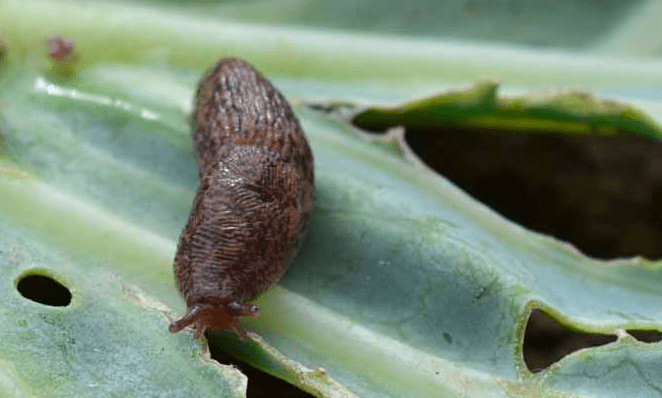Do you have a turnip plant in your garden that is plagued with holes in the leaves? Don’t worry, you’re not alone. This is a common problem for turnip plants, and there are several reasons why it might happen. In this blog post, we will discuss the causes of holes in turnip leaves and how to solve the problem.
Why Are There Holes in My Turnip Leaves?
The most likely reason for holes in turnip leaves is the presence of pests. Common pests that cause this problem include aphids, caterpillars, flea beetles, and slugs.
These pests enjoy eating turnip leaves as they are rich in nutrients. The holes they leave behind not only affect the appearance of the plant, but can also lead to serious problems such as stunted growth, yellowing leaves, and even death.
Take a close look at the underside of the leaves and in the crevices of the stem to see if you can spot any pests. If you do, you’ll need to take action to get rid of them.
These pests can only come out at night, so you may need to get up early or stay up late to catch them in the act. Once you’ve spotted them, you can move on to the next step: solving the problem.
How to Treat Turnip Leaves with Holes?
To get rid of pests, you’ll need to use an appropriate insecticide or pesticide. Be sure to follow the instructions on the label and apply it carefully to avoid harming your plant.
I am a huge fan of neem oil (Amazon link), as it is an organic and safe option that can be used on vegetables.
Simply mix a few drops of neem oil with water in a spray bottle and apply it to the affected areas. You’ll need to do this every few days until the pests are gone. Be sure to spray the undersides of the leaves as well, as this is where most pests hide.
Once you’ve treated your plant, the holes should start to disappear within a few days. However, it is important to continue monitoring your plant for pests and taking action if necessary.

How to Keep Pests Away From Turnip Leaves?
To prevent pests from returning again in the future, you can take some preventative measures.
One of the best things you can do is to keep your garden clean. This means removing any dead leaves or debris that might attract pests. You should also avoid using chemical fertilizers, as they can actually make your plants more susceptible to pests.
Also, make sure to keep an eye out for early signs of pests and take action immediately. The sooner you can get rid of them, the better.
What Else Causes Holes in Turnip Leaves?
There are other possible causes of holes in turnip leaves, such as:
Disease
Various diseases can cause holes in turnip leaves. The most common is Alternaria leaf spot, which causes small, dark-colored spots on the leaves, which can develop into holes.
if you suspect that your plant has a disease, you should take action immediately. Remove any affected leaves and dispose of them properly. You can also treat the plant with a fungicide (neem oil) to prevent the disease from spreading.
Animals
If you live in an area with deer or other animals, they may be the cause of holes in your turnip leaves. These animals enjoy eating young leaves, and their droppings can also spread disease.
The best way to protect your plant from animals is to build a fence around your garden. You can also try using deer repellent, but be sure to read the labels carefully to make sure it is safe to use on vegetables.
Should I Prune Turnip Leaves with Holes?
Once you’ve treated the pests or disease, you may be wondering whether or not you should prune the turnip leaves with holes.
The answer to this question depends on the severity of the damage. If the holes are small and there are only a few affected leaves, you can simply remove those leaves and wait for new ones to grow.
However, if the damage is more severe, you may need to prune the entire plant. This will encourage new growth and help your plant recover from the damage.
Pruning turnip leaves can be a bit tricky, so it’s always best to err on the side of caution. If you’re not sure whether or not you should prune, it’s always best to consult with a professional.
Conclusion
In conclusion, holes in turnip leaves are most often caused by pests. However, there are other possible causes, such as animals or diseases.
If you notice holes in your turnip leaves, the best thing to do is to take action immediately. Remove any affected leaves and dispose of them properly. You can also treat the plant with an insecticide or fungicide to prevent the problem from returning.
Finally, make sure to keep your garden clean and free of debris. This will help prevent pests from returning in the future. Thanks for reading!
Tim is an avid gardener from the UK. He was the founder of PlantCarer.com from 2021 to Sep 2023. He sold PlantCarer.com to Aaron. He has since started his own business called Seed To Supper, which provides new gardeners all the materials you need in a box (pots, seeds, compost and instructions) to grow your own delicious and nutritious vegetables and herbs from start to finish – no garden required.









0 Comments